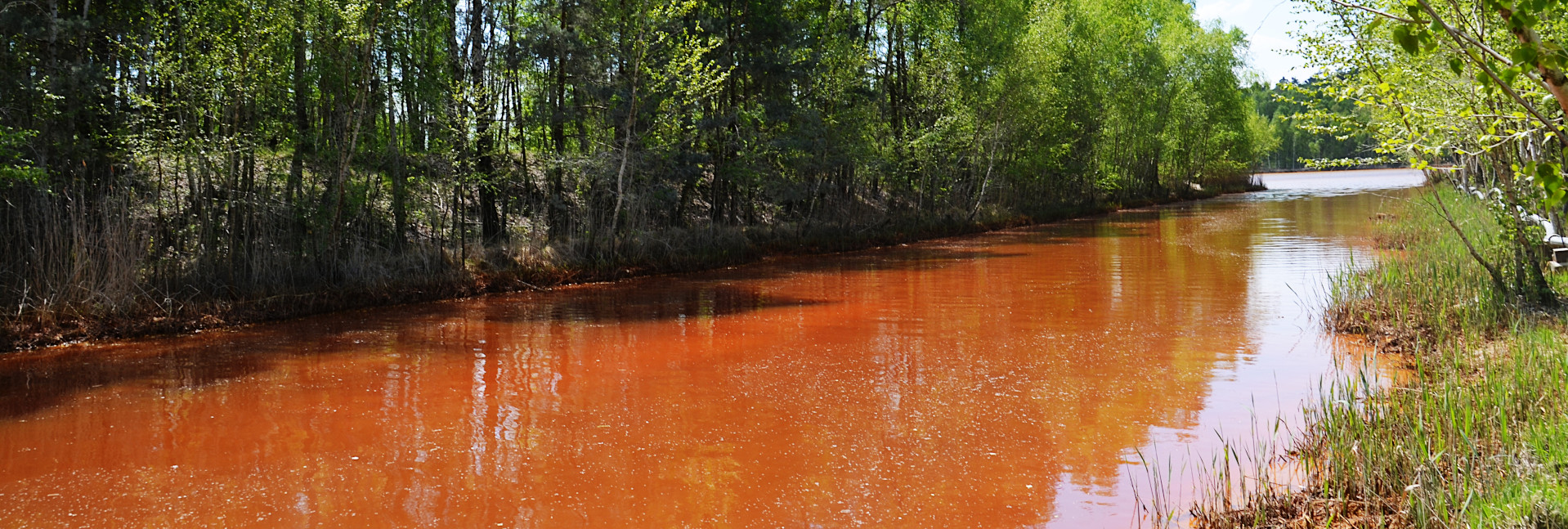
Water ecology and restoration

Water bodies modified by mining
The focus is on water bodies that are influenced or newly created by the mining of raw materials and its long-term consequences – i.e. landscape-forming open-cast mining lakes, flowing waters and groundwater. The remediation objectives are a quantitatively balanced landscape water balance and good water quality.
During lignite mining, the dump material and the adjacent drained environment are aerated so that iron sulphide (mainly in the form of pyrite or marcasite) contained in the material is oxidised. During this process iron and sulphate are released. As a result, groundwater and surface water may contain considerable concentrations of iron and sulphate and become highly acidic. These processes can also occur during ore and coal mining.

Research on waters at FIB e.V.
FIB e.V., for example, has successfully developed and tested a process to re-precipitate iron and sulphate from groundwater, so that the pollution of surface waters can be significantly reduced. For this purpose, a nutrient solution is infiltrated into the subsurface to allow the growth of sulphate-reducing bacteria, which can be used to re-precipitate iron and sulphate as iron sulphide. The processes of the release of acid, iron and sulphate can also be traced using selected large lysimeters.
We are also working on the ecological processes in open-cast mining lakes as well as in wetlands and fens. There, too, the microbially catalysed determination of iron and sulphate plays a role. In the case of open-cast mining lakes, their colonisation by plants such as reeds and animals such as water bugs and beetles is also an interesting field of work.

We also carry out experimental work on the geochemical release of substances using column experiments in our water pilot plant. Here, for example, we have investigated the suitability of iron hydroxide material from watercourse maintenance for covering potash tailings piles in the southern Harz region.
An important future topic is the interplay between landscape water balance and climate change. Lowered groundwater levels and the lack of water retention in the landscape are causing serious problems – both in agriculture and forestry and for wetter nature conservation areas and lakes. We are addressing this issue with the support of satellites and FIB’s own drone.
